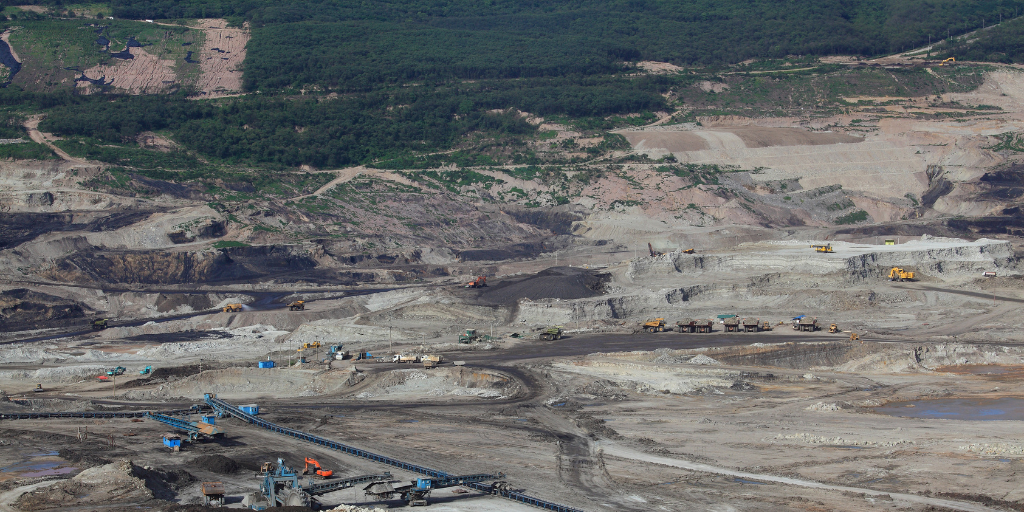On January 11, 2023, contrary to the decarbonisation process enshrined in the National Recovery and Resilience Plan (NRRP) and in national law, which foresees a coal phase-out by 2032 the latest, the Romanian government adopted a Government Decision to cut down a 106-hectare forest without compensation so that the state-owned coal mine and plant operator Oltenia Energy Complex (CEO) could expand one of its lignite mines.
The decarbonisation law is one of the milestones in the NRRP that had to be completed by the end of 2022 for Romania to receive the second tranche of EU recovery funds. After a series of amendments, the Emergency Ordinance 108/2022 regarding the decarbonisation of the energy sector was approved as Law 334 on December 5, 2022.
‘Expanding the Timișeni-Pinoasa mine in Gorj county to a capacity of 8,000,000 tonnes/year of lignite, not only increases CO2 emissions, but also means that more than 100 hectares of forest will be wiped out. Deforestation and then burning lignite will have a double negative effect on the environment by increasing CO2 emissions and reducing the absorption capacities’, said Alexandra Doroftei, coal campaigner at Bankwatch Romania.
The decarbonisation law has already undergone substantial changes, positive and negative:
- on December 14, 2022, a series of changes were made through Government Emergency Ordinance (GEO) 175/2022, to respond to the European Commission’s observations. Thus, the provision which allowed coal power plants to stay in technical reserve was scrapped.
- But on December 28, 2022, two weeks after the previous changes, the government approved the postponement of the retirement of 660 MW of coal units (Rovinari 3 and Turceni 7), from 31 December 2022 to 30 October 2023.
The purpose of the decarbonisation law is to establish the framework for reducing CO2 emissions in the energy sector, but the most recent changes have exactly the opposite effect.
Moreover, The Oltenia Energy Complex, in its restructuring plan approved by the European Commission as a condition for receiving state aid, has a coal power plant retirement calendar, so it is expected that mines which supply the coal to the respective units would follow the same calendar, not the opposite.
According to the Government Decision adopted on January 11, the expansion of the Pinoasa lignite mine would reach a production of 8,000,000 tonnes/year, almost half of Oltenia’s total 2021 lignite production.
In 2022 alone, two other Government Decisions were approved, 1484 of December 14, 2022, and 1411 of November 22, 2022, which, together with this week’s Government Decision 13/11.01.2023, would lead to a potential increase of lignite production by 15.5 million tonnes/year, which means almost the entire lignite production of Romania can be covered by these three mines.
‘The actions of the Romanian government towards the decarbonisation of the energy sector show that cashing in recovery funds is its main motivation, not real measures to decrease CO2 emissions and advance the energy transformation. We urge the Government to act on the climate crisis and stop postponing the much-needed measures to mitigate it’, concluded Doroftei.
Contacts
Ioana Ciuta, Energy coordinator for CEE Bankwatch Network and president of Bankwatch Romania, ioana.ciuta@bankwatch.org; Twitter: @unaltuser
Notes for editors
- Bankwatch Romania is an association established in 2012, whose aim is to prevent the negative environmental and social impact of public and private projects and to promote sustainable alternatives and public participation in decision-making. www.bankwatch.ro
- Between 2017 and 2021, Oltenia Energy Complex had an average total annual production of approximately 18.5 million tonnes of lignite from the ten mines it operates.
| Year | 2017 | 2018 | 2019 | 2020 | 2021 |
| Production [thousand tonnes] | 22,512 | 21,207 | 19,686.86 | 13,158.339 | 15,879.740 |
Never miss an update
We expose the risks of international public finance and bring critical updates from the ground – straight to your inbox.
Institution: EU
Theme: Coal
Location: Romania
Project: Coal in the Balkans
Tags: Romania | coal in the Western Balkans | fossil fuels | lignite

